The Art of Selecting Premium Articulated Models: How Forgely Chooses Winners
Share
The Art of Selecting Premium Articulated Models: How Forgely Chooses Winners
After 150,000 hours of printing experience and countless trade shows where 95% of our sales are articulated models, we've learned what separates extraordinary designs from disappointing downloads.
At Forgely, we don't just print whatever file comes through the door. With over 12,000 hours in our current print queue and 27,000 monthly print hours of capacity, every model we choose to offer represents a careful selection process honed through years of real-world printing experience.
What Makes an Articulated Model Worth Your Time?
Joint Design Quality Not all articulated models are created equal. We've printed thousands of dragons, miniatures, and fidget toys, and the difference between a smooth-moving masterpiece and a frustrating failure often comes down to the original designer's understanding of FDM printing limitations.

The best models account for layer adhesion, print orientation, and material properties from the design phase. When we evaluate a new dragon design, we're looking at joint clearances, support requirements, and how the model will actually behave when printed in PLA, PETG, or specialty materials.
Print-in-Place Engineering True print-in-place articulation is an art form. The model must be designed so that moving parts print separately but connected, with just enough clearance to break free during post-processing. We've learned to spot designs that look good on screen but will fuse together during printing.
Our 95% print success rate includes articulation functionality as a key metric. A dragon that prints perfectly but has stiff joints is considered a failure in our book.
The Forgely Selection Process
File Quality Assessment Before any model enters our rotation, we examine the STL file for common issues: non-manifold geometry, intersecting surfaces, or inadequate wall thickness. Our experience with 50+ printers, including our fleet of Bambu Labs H2D units, has taught us to catch problems that would cause print failures or poor joint function.

We also evaluate support requirements. Models that need supports touching joint surfaces rarely make our cut, since support removal can damage the precise bearing surfaces that make articulation smooth.
Test Print Protocol Every new articulated model gets a test print using our standard PLA settings. We put it through our full quality control process: articulation testing, stress testing, and real-world handling simulation.
Models that pass our initial test might get printed in multiple materials to understand how PETG or specialty filaments affect joint performance. Some designs that work beautifully in PLA become too flexible in TPU or too brittle in ABS.
Customer Appeal Evaluation Our trade show experience has taught us what catches people's attention. Interactive displays with touchable samples show us immediately which models people gravitate toward. Dragons consistently outperform other categories, but within dragons, certain design styles and articulation patterns prove more engaging.

We track which models generate repeat orders and which ones customers buy once and never return for. This real-world feedback shapes our future selections.
Material Considerations for Articulated Models
PLA: The Articulation Champion With 300+ PLA colors in our inventory, we've learned that PLA's dimensional stability makes it ideal for precise joint tolerances. Its low shrinkage rate means joints that work in our test prints will work consistently in production runs.
Different PLA brands can affect joint performance. Our main supplier, Eryone, provides consistent results, but we've tested dozens of brands to understand how color additives and formulation differences impact articulation.
Specialty Materials for Specific Applications PETG offers superior impact resistance for models that will see heavy handling. We recommend it for miniatures intended for gaming use or dragons destined for children's play rather than display.

TPU opens up possibilities for models requiring extreme flexibility, though joint design becomes more critical due to the material's elastic properties.
Red Flags: Models We Avoid
Overly Complex Joint Systems Models with joints that require assembly or have more than three degrees of freedom per joint rarely print successfully. We've learned to spot designs that look impressive in renders but fail in reality.
Inadequate Clearances Designers who don't understand FDM printing often create joints with clearances that work for resin printing but fail with layer-based manufacturing. We can usually spot these issues before wasting filament on test prints.
Poor Support Strategies Models that require supports in critical joint areas get passed over. The support removal process inevitably damages the precise surfaces needed for smooth articulation.
The Trade Show Test
Our ultimate validation comes from trade shows. Models that survive the "touchable sample" test - where dozens of people handle them throughout a weekend event - prove their real-world durability.
We've noticed that customers immediately understand quality when they feel smooth joint action. The difference between a well-selected model and a mediocre one becomes obvious the moment someone picks it up and starts moving parts.
Why This Matters for Your Order
When you order an articulated model from Forgely, you're not just getting a 3D print - you're getting the result of our selection expertise. Every dragon in our collection has passed our rigorous evaluation process and proven itself through actual customer interaction.
Our under 1% return rate stays low partly because we've already filtered out the designs that would disappoint customers. The models we offer represent the top tier of what's available in the articulated 3D printing world.
Looking Forward
As we expand our capacity with new Bambu Labs H2D printers and continue growing our material selection, our model curation process becomes even more important. We're constantly evaluating new designs and retiring models that don't meet our evolving standards.

The articulated model market continues advancing, with designers learning to optimize specifically for FDM printing. Our role as curators becomes more valuable as the volume of available designs grows but quality remains inconsistent.
Ready to experience the difference that expert model selection makes? Browse our curated collection of premium articulated models at tdawgsworld.etsy.com - each chosen for exceptional print quality and smooth, satisfying movement.
